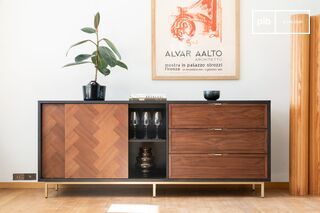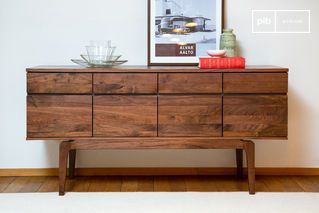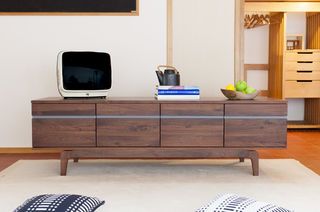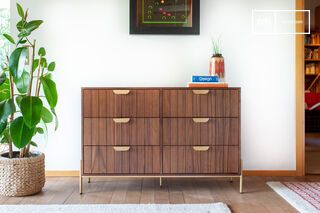Walnut sideboards
Walnut sideboards introduce a deep hue and pronounced grain into interior design. Walnut, a dense wood with contrasting fibers, creates a strong visual anchorage without resorting to mass. These sideboards offer formats adapted to living areas, with closed storage, mixed modules or continuous lines. Their use extends from the living room to the entrance hall, including transitional areas. The material creates a clear visual impact, in dialogue with neutral or mineral surfaces.
read more >Filters
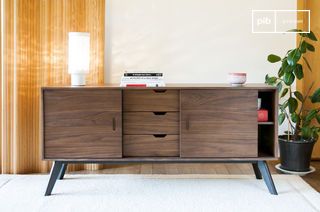
Walnut buffetHinda
€1080
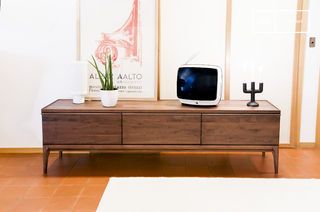
Walnut TV standHemët
€1580
10 festive days
10% off our tables and consoles
Welcome your guests in style · Limited stock

Understanding the visual impact of a walnut sideboard
The walnut sideboard is based on a material characterized by its dense grain and contrasting hues. American or European walnut is renowned for its fluid, often irregular grain pattern, which generates a visual dynamic even on flat surfaces. A walnut sideboard creates a focal point in a room, without overthickness or overload. Its color, generally medium to dark brown, partially absorbs light and establishes a stable relationship with light-colored walls, parquet or mineral plaster. It blends into sober compositions, where the material carries the reading of the furniture.
Formats, functions and internal organization
The walnut sideboard comes in low, semi-high or pedestal-mounted versions. Sizes vary from 90 to 180 cm long, depending on the capacity required. Inside, modules are generally divided into hinged or sliding doors, sometimes combined with drawers or open niches. The layout is based on a functional logic: crockery, textiles, everyday items. Discreet opening systems (push-buttons or recessed grips) are often preferred so as not to interrupt the continuity of the wood veneer. Walnut is sometimes combined with metal or glass, but remains the dominant material, structuring the whole.
Positioning in space and possible combinations
A walnut sideboard fits into living, entrance or office spaces. In a living room, it is installed against a side wall or at the back of the room to organize a discreet linear space. In a dining room, it accompanies a table in a coordinated or contrasting shade, avoiding formal duplication. Its dark hue calls for particular attention to lighting, whether direct or indirect, so as not to accentuate the perceived density. It combines well with rough or smooth materials: waxed concrete, natural textiles, black metal or brushed aluminum.
Choosing a walnut sideboard means integrating a stable material that is both expressive and durable. Its role goes beyond simple storage: it defines a legible volume and a material continuity in space.
